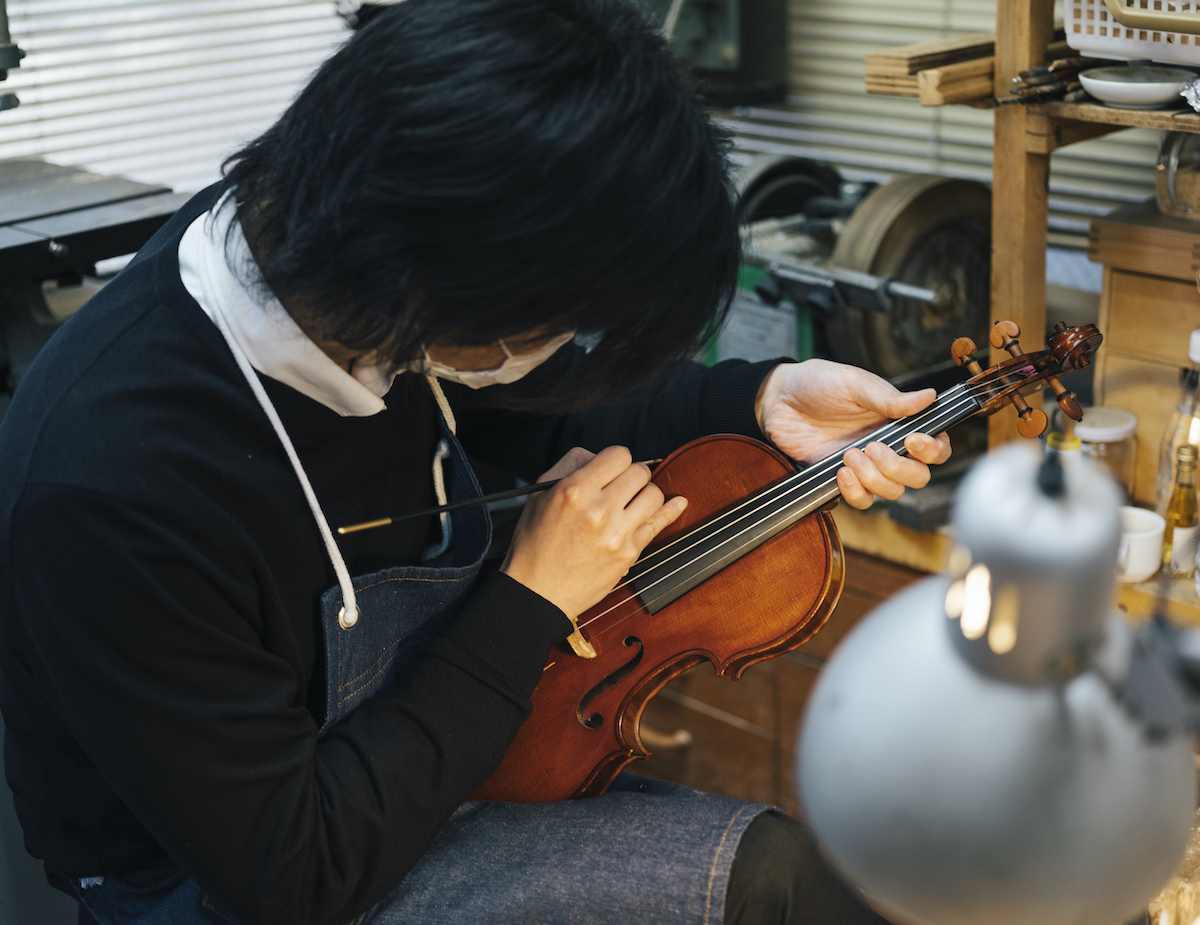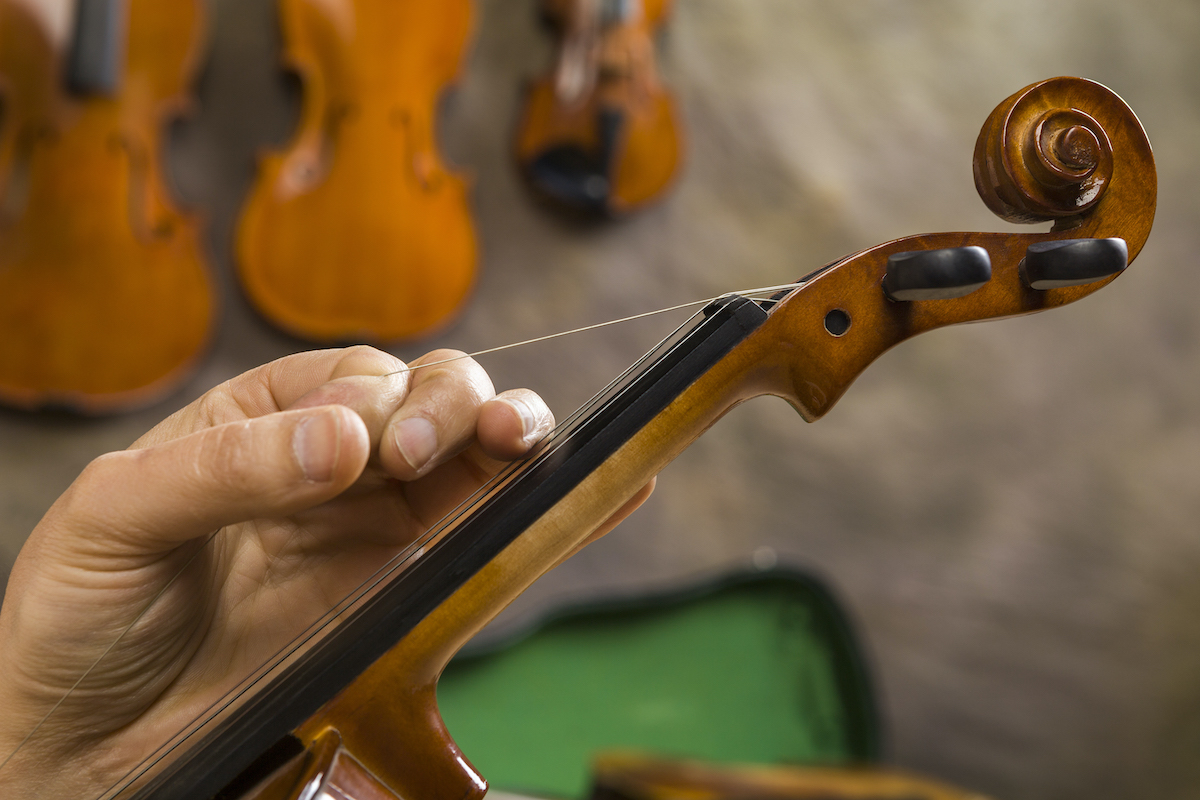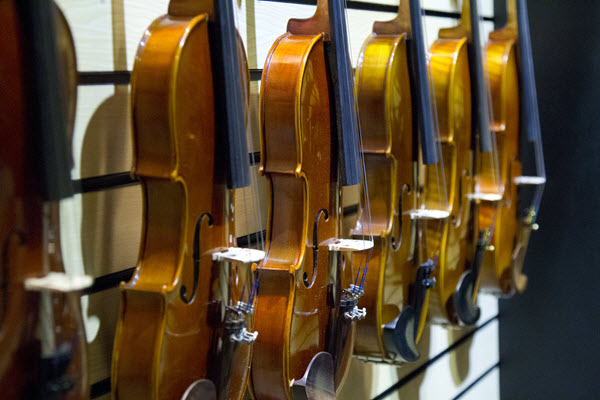When Your Violin Needs a Luthier Visit
How to keep your string instrument healthy and sounding great.
If you play and own an orchestral string instrument such as a violin, viola, cello or upright bass, you may find that the feel and sound can change on an almost day-to-day basis. Why should this be the case? The answer is that the spruce and maple woods in your instrument are hygroscopic materials, meaning that they absorb moisture from the atmosphere around them. We should never forget that the natural materials that make up a string instrument came from the living organisms that we humans call trees.
Those trees take nutrients from the soil, sunlight and water, and they breathe in carbon dioxide and expel oxygen — the opposite of what we do. One day a tree is felled and becomes the instrument you play … but rest assured that its life didn’t end when it was cut down, because a string instrument continues to live and react to its surroundings. And these changes mean you’ll need to have your instrument serviced regularly by a trained technician known as a luthier.
What Is a Luthier?
A luthier is a highly trained professional who specializes in the craftsmanship and maintenance of a string instrument. These folks spend years studying wood and instrument construction, and while your instrument may live up to your expectations, the luthier is constantly searching for ways to make it sound better and more comfortable for the player who uses it.

How Often Do You Need to Visit a Luthier?
How often you need to bring your instrument to a luthier depends on many factors, including how often you play it and how drastic seasonal change is where you live. In general, it’s a good idea to have a luthier service your instrument at least once a year. Upon inspection, the luthier will look for the following:
– General condition and integrity of the instrument. Are there any open seams or wood cracks? These things are inevitable in the life of every string instrument and are not the fault of the player, but if they occur, an immediate service is necessary. Closing a seam is usually a simple matter where the luthier applies droplets of hide glue and clamps the seam overnight to ensure that it’s properly closed. Cracks, on the other hand, present more of an issue. Often the luthier will need to remove the full top of the instrument to install “cleats” inside to hold the sealed crack in place and complete the repair.
– Bridge inspection. Is the instrument’s bridge healthy and well-positioned without any warping? Are string clearances correct? If not, the bridge may require some adjustment or even replacing.
– Fingerboard inspection. Is the fingerboard smooth and well-shaped? Over long periods of time, the movement of hands and strings will lead to wearing that a luthier can remedy by reshaping and restoring the contour of the fingerboard. This will help with both intonation and position shifting, making the instrument more comfortable and responsive.
– Peg condition. Pegs are a moving component of the instrument, and over time and constant use, the peg holes can become oval-shaped from the tension of the strings. This can cause slipping or sticking, which will lead to intonation problems. The luthier will determine when they need to be redressed — a process where a reamer is used to restore the peg holes to a circular shape. A compound is then applied to the shafts of the pegs and they are reset into the peg box for a smooth and reliable tuning action.
– Strings. Strings are the source of the sounds you create and therefore the life of the instrument. They wear out far more often than most players notice. An average player should change strings about once a year. If you’re an advanced player, you’ll need to change them even more often to ensure they keep providing the proper sound that the instrument was built to create. A luthier will help you decide how often to change strings based on your style of playing.

– Sound post inspection. Inside of your instrument is a spruce dowel called a sound post. The Spanish name for this piece is “alma,” which translates in English to “soul” … and it very much is just that. The sound post helps to transmit the vibration of the string across the top and back of the instrument. Its positioning in relation to the bridge is crucial and the luthier will check to make sure that it is well shaped to the inside top and back and in the correct spot inside of the instrument.
A string instrument is a beautiful work of art crafted from natural wood materials, but it is also a complex machine that requires care and maintenance over its lifetime. A skilled luthier can keep these instruments healthy and sounding great, and in the right hands, they can last a lifetime … or even centuries!
Check out these related blog articles:
Winter Weather Care for Woodwind and String Instruments
Five Things You May Not Know About String Instruments
Click here for more information about Yamaha string instruments.













